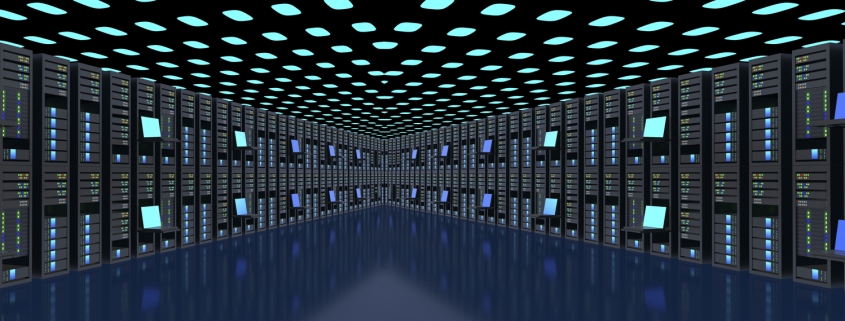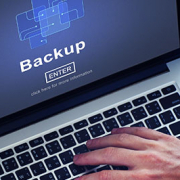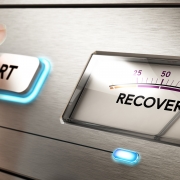What You Should Know About Intelligent Business Continuity Versus Traditional Backup
Introduction
Most businesses, when they start, do not have experienced IT personnel on staff. They buy PCs and get a break-fix company to install a server. Often, they’ll add a data backup solution as well.
The data backup system they have seems to work for them at this stage. They don’t have a lot of data, and their setup is relatively simple. However, as the company grows, their needs change. The owner’s mindset usually doesn’t. This is where the problem begins.
The Difference Between Data Backup And Business Continuity Starts With Mindset
Data backup answers the question, “Is my data safe, and can I get it back if lost?”
Business Continuity forces owners to think at a higher level. They ask, “How quickly can I recover?”
The bottom line is that with a traditional backup, you’ll recover your data, but it won’t be quick. Every hour your systems are down; your business bleeds money.
For example, if your server suddenly died, to recover with data backup:
- You need first to repair or replace the server
- Re-install all software and data
- Re-configure settings and preferences
This process could take hours for small networks or days for larger ones. It could take much longer if you’re downloading data from the cloud.
In the meantime, your users can’t do their jobs. You’ll still need to pay them plus bear the cost of new hardware, setup, and repairs.
Don’t think it can happen to you? Statistics show that hardware failure is the number one cause of data loss.
On the other hand, if you planned for Business Continuity, you’ve already thought about:
- The maximum amount of time your business can do without access to company data
- The maximum time in which data may be lost before recovery begins
With a Business Continuity solution, you can perform frequent image-based backups. Backups can be taken every 15 minutes if needed. Images are complete copies of the operating system, programs, data, and settings. These images can be virtualized and, in effect, act as a complete software copy of the server.
If your server goes down, the latest image is virtualized. Users are then connected to the virtual server, working business-as-usual. Downtime is minimal.
Once the server is replaced, the updated image is applied to the server. From that point, the business returns to normal operations.
In the above scenario, the maximum amount of data that would be lost is in the 15 minute interval from the last backup.
Automation Makes Business Continuity Intelligent
Traditional backup is mostly manual, and they’re tough to verify.
Intelligent Business Continuity automates most tasks. Backup intervals, screenshot verifications, saving to multiple locations, etc. are all done automatically, without human intervention.
Stop Thinking About Merely Backing Up Data
Business owners and executives need to change their mindset. Today, business is high-speed. If you’re not there for your customers when they need you, they’ll go somewhere else. That is the hard truth. Quick recoveries will set you apart from ordinary businesses. Lets recap the differences between data backup and Intelligent Business Continuity:
| Traditional IT Data Backup | Managed Intelligent IT Business Continuity |
| Recovery can take days to weeks. | Downtime after a disaster is reduced to hours and minutes. |
| High risk for human error due to manual administration. | Highly automated backup process PLUS monitoring, maintenance, and support requires minimal end-user interaction and resources. |
| Difficult to test backup. | Automated screenshots are taken and reported to ensure that backup was successful and can be booted at anytime. |
| Time-consuming and expensive to make copies of backups or to store them in multiple locations. | Each backup is saved in multiple locations: to the local appliance and bi-coastal data centers. |
| Backup speeds are slower. | Quick, efficient transferring of files to offsite data centers, even with low bandwidth or busy network environments. Critical data can be prioritized to be transferred offsite first. |
| Physical to virtual conversions can be time-consuming and have a high failure rate. | Incremental backups can be instantly virtualized, rather than the entire backup chain. |
| No redundant backups in multiple locations, leaving high risk for original backup systems to be destroyed. | Eliminates downtime in the event of a disaster by allowing your business to run from copies of your virtualized servers onsite or offsite in hardened, SSAE-16 certified data centers. |
| Limited options for encrypting data, may not pass industry regulations (i.e., HIPAA, SOX). | AES 256 and SSL key-based encryption ensures data is safe and meets industry regulations. |
The Best Intelligent Business Continuity Solution
We recommend Datto. Their solutions are cutting-edge and reliable. With Datto, you’ll be able to operate even if your servers are damaged or destroyed. That’s resilience!
XSolutions is an Elite Partner of Datto, the world leader in Hybrid-Cloud Business Continuity solutions whose systems protect 460+ Petabytes of data with over 1400+ employees and 9 offices around the globe. Call (845) 362-9675 and let us introduce you to the ultimate defense against data loss—whatever the cause. Backup & Disaster Recovery| Cloud Data Protection |Managed IT Services










